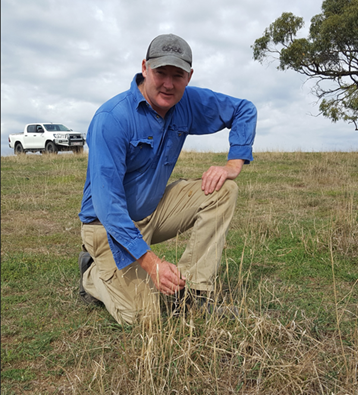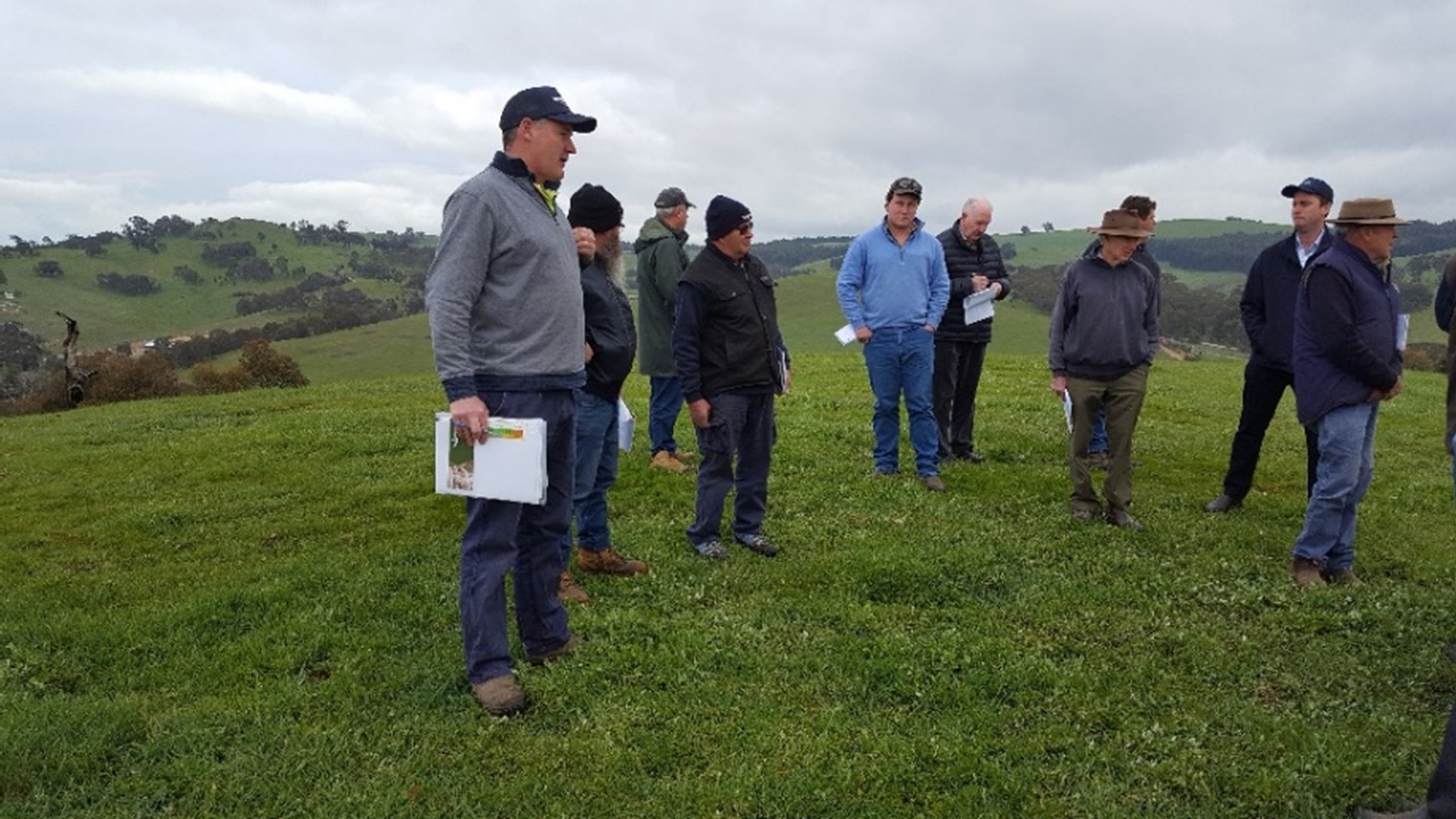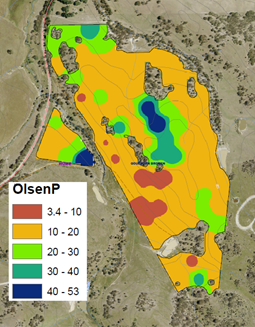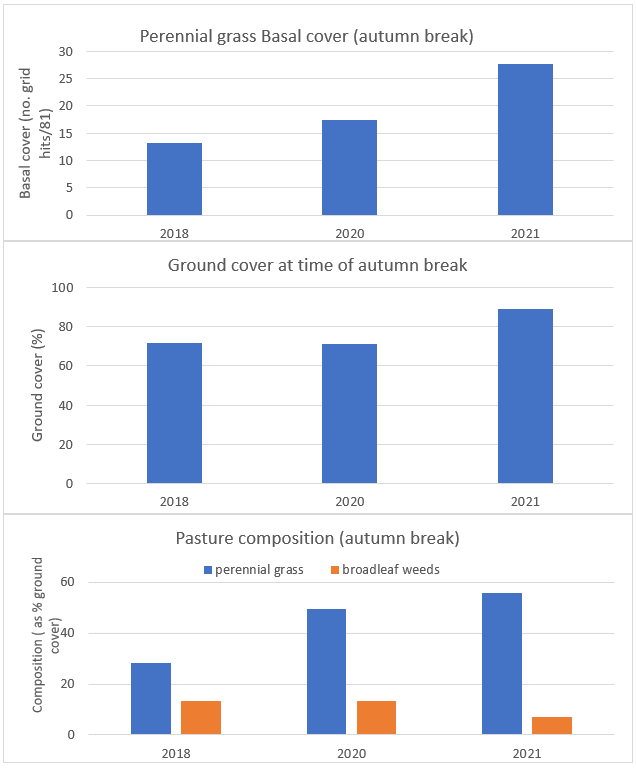Managing the variability of soil fertility and grazing pressure in hill country has been a major focus for Victorian sheep and cattle producers, Brian and Elyse Kelly.

Their farm, which has been in the Kelly family for nearly 100 years, is characterised by sedimentary hill country.
Traditionally, this hill country was often set stocked with Merino wethers.
"Set stocking, along with large paddocks, led to massive transfer of nutrients to sheep camps and overgrazing there but under-grazing of the lower slopes or south facing slopes," Brian said.
1. Reducing paddock size
To address this, Brian has been working on land-class fencing and reducing the size of the paddocks to be able to rotationally graze them better.
He's also improved the soil fertility and pH and aims to sow 40ha to Holdfast GT phalaris each year.
"When we purchased a new block in 2012 it was one big paddock.
"We initially worked on lifting the low soil Olsen P by applying superphosphate every year and included molybdenum (trace element) with the super the first year."
This new area also had some old Australian phalaris present in one section and some native perennial grasses, but there was capeweed and other broadleaf weeds on the overgrazed sheep camp areas which were vulnerable to erosion.
"So, the next step was to improve the ground cover and the perennial grass content," Brian said.
2. Mapping the impact
In 2017, Brian and Elyse took the opportunity to set up a 40ha grazing management demonstration site with technical support from Brad Costin of Agriculture Victoria and Lisa Warn of Lisa Warn Ag Consulting.
The aim was to evaluate the impact of improved grazing management on ground cover, soil nutrient levels and pasture species composition.
The site was fenced into three smaller paddocks based on land-class, tree belts planted, and rotationally grazed using mainly cattle.
At the start of the project, the soil macro nutrient levels (phosphorus, potassium and sulphur) and pH were measured across the site on a grid pattern and sample locations recorded using GPS by Precision Ag.
The resulting maps of high/low nutrient levels and pH were used for more targeted fertiliser and lime applications.
The detailed soil testing procedure will be repeated in 2023 to evaluate any changes in nutrient distribution.

Image: Brian Kelly (left), with the Healthy Soils group, discussing nutrient and pH variation across the paddock, and improving grazing management and ground cover in his hill country.
3. Value of soil testing

Brian is a member of the Grasslands Society of Southern Australia's mid-Goulburn branch – whose Healthy Soils group is funded by MLA and coordinated by Lisa Warn.
His demonstration site with the detailed topsoil data, and some subsoil data, has been a valuable resource to assist the Healthy Soils group to improve their soil assessment skills and identify possible soil constraints to productivity.
"Being part of the Healthy Soils group has highlighted that we need to do more soil testing to refine our maintenance fertiliser program, monitor pH/aluminium more closely and adjust our lime rates," Brian said.
Lisa said investigating what's going on down the soil profile – not just the topsoil – is also important to identify possible constraints to pasture growth and to understand what you can and can't address.
"Many of the group members have hill country with similar soils to the Kellys' and were all looking for ways improve soil management and get better water infiltration to extend the growing season," Lisa said.
"When we looked at the demonstration site soil profiles with the group, although the sub-soils are very dispersive (high exchangeable sodium percentage) which restricts water infiltration, it was great to see how well the phalaris roots were penetrating the subsoil with the good grazing management.
"Allowing adequate rest between grazing allows both the shoot growth and root growth of the perennial grasses to be optimised. The extensive fibrous root system of grasses can improve the soil structure and create pathways for water infiltration."
Brian's "lessons learned" |
1. Fencing to land-class and reducing the size of the paddocks supports rotational grazing. 2. Soil testing and GPS mapping to identify areas of high/low nutrient levels and pH enable targeted fertiliser and lime applications. 3. Investigating what's going on down the soil profile – not just the topsoil – is important to identify possible constraints to pasture growth. |
Image: Lisa Warn, Brian Kelly, Sonia Sharkey (SW Goulburn Landcare Network) and Brad Costin.
Measuring success: pasture assessments
Lisa and Brad made pasture assessments around the time of the autumn break each year, from 2018 to 2022.
These assessments included perennial grass persistence (plants/m2) and size (tiller basal cover), pasture species and ground cover and were taken from the same places each year.
Paddock 1 had the higher proportion of hilltop/sheep camp and less ground cover than the other two paddocks at the start of the project and a summary of the results for Paddock 1 are shown in Figure 1.

Figure 1: Results of pasture assessments for paddock 1 from 2018 to 2021, taken from an average of nine permanently pegged quadrat sites.
"There was some old Australian phalaris in parts of this paddock and its content has dramatically improved with the changes to grazing," Lisa said.
"There has been an increase in the cover of perennial grass tiller bases and ground cover and annual broadleaf weeds have declined in all three paddocks.
"The demo site shows that with right package of management – land class fencing, rotational grazing strategic nutrient application and appropriate pasture species selection – common problems in sedimentary hill country can be mitigated and productivity improved."
The demonstration site is supported by the Southwest Goulburn Landcare Network and the Goulburn Broken Catchment Management Authority with funding from the Australian Government's National Landcare Program.







